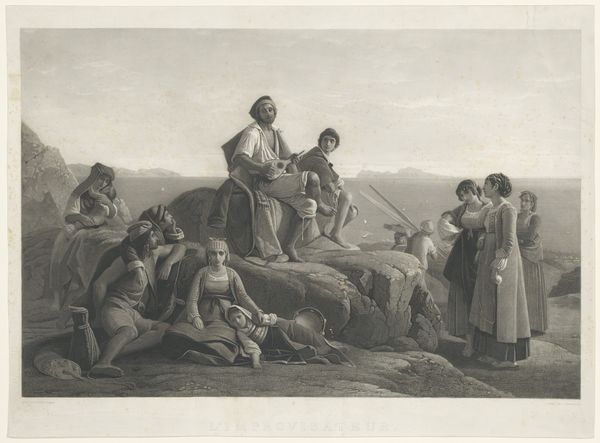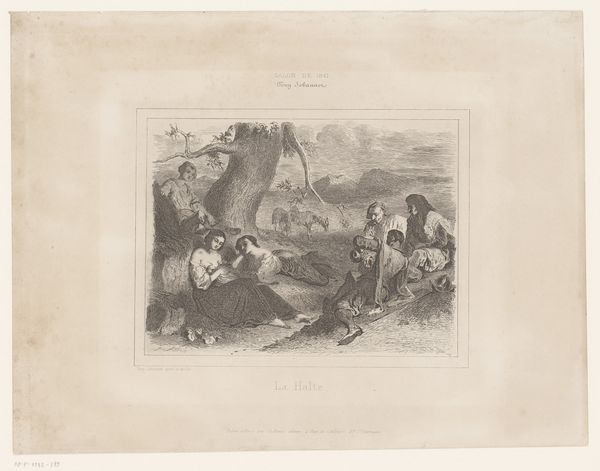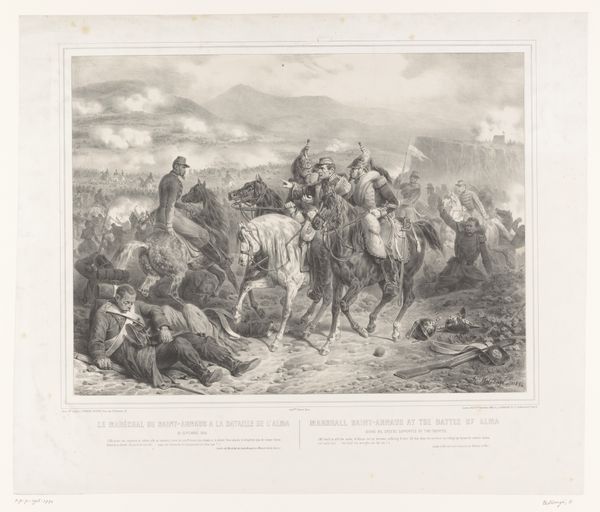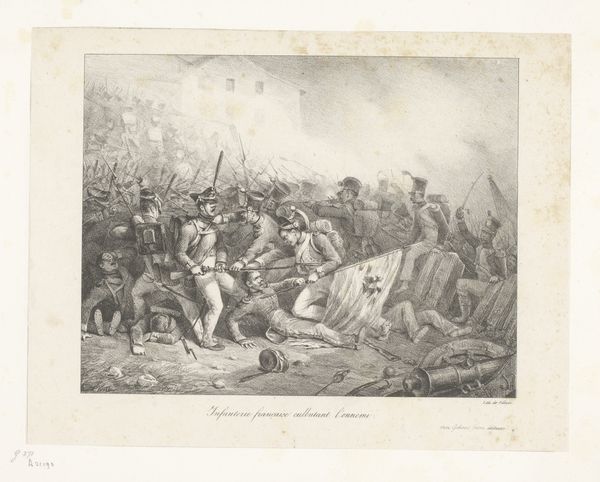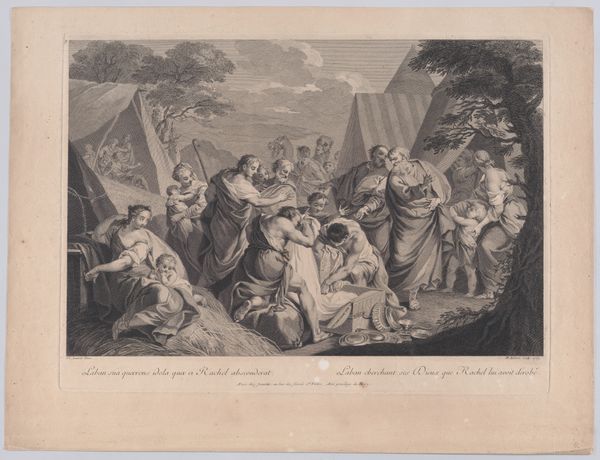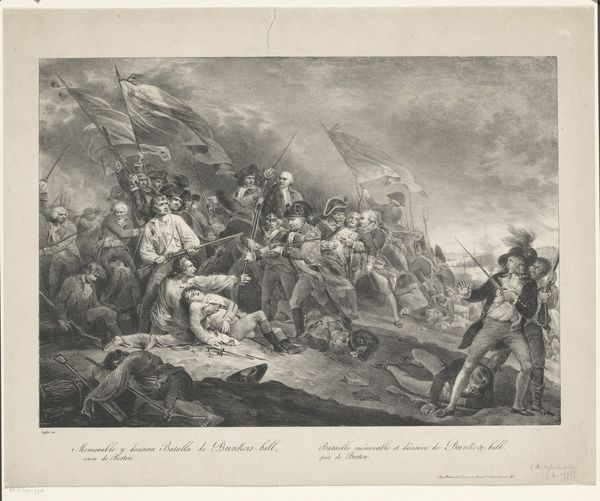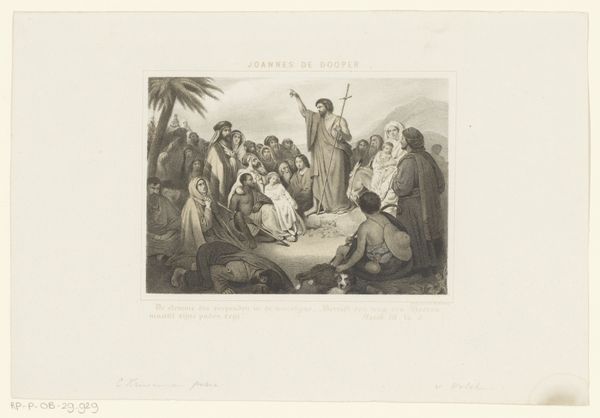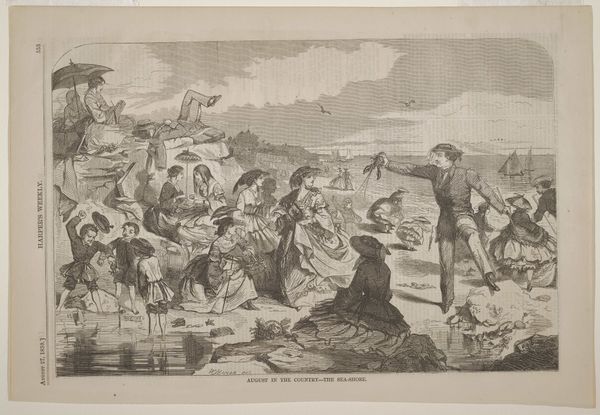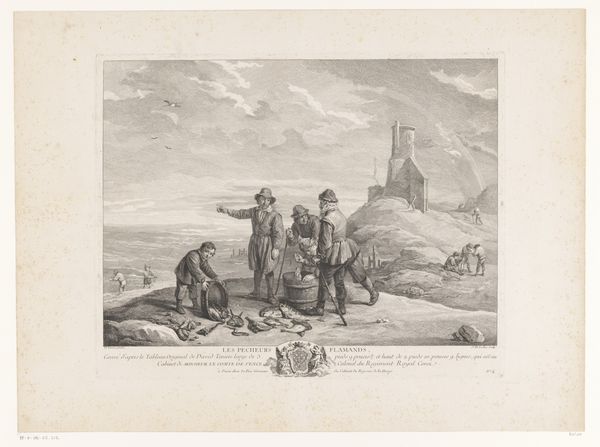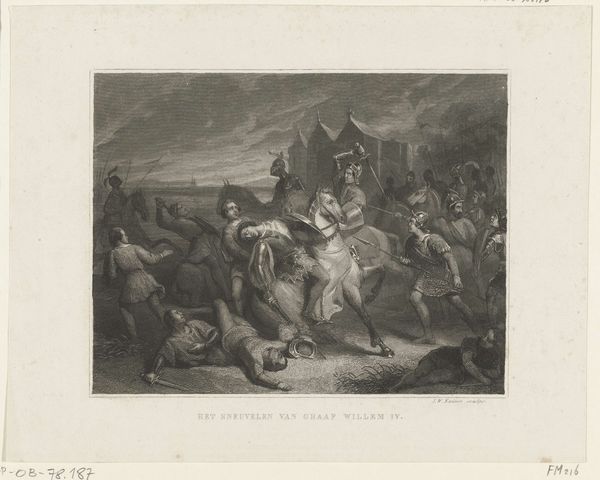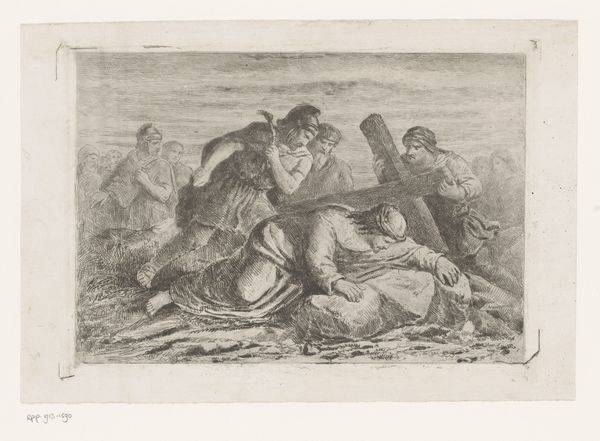
Sint-Franciscus Xavier verricht wonderen bij slaafgemaakten in een kustlandschap 1833 - 1883
0:00
0:00
Dimensions: height 430 mm, width 571 mm
Copyright: Rijks Museum: Open Domain
Auguste Numans created this print, titled 'Saint Francis Xavier Performing Miracles on Enslaved People in a Coastal Landscape,' sometime in the 19th century. The image invites us to consider the intersections of religion, colonialism, and slavery. Set against the backdrop of a coastal scene with ships and a distant city, the print depicts Saint Francis Xavier, a Catholic missionary, amidst a group of enslaved people. Numans romanticizes the role of the church in the colonial world. The enslaved people are portrayed as passive recipients of Xavier's supposed miracles, obscuring the violence and dehumanization inherent in the institution of slavery. How does the artist's choice to depict this scene reflect the attitudes of 19th-century European society towards colonialism and slavery? What narratives are being reinforced, and whose voices are being silenced? As you consider this image, reflect on the complexities of history and the importance of critically examining the stories we tell about the past.
Comments
No comments
Be the first to comment and join the conversation on the ultimate creative platform.
